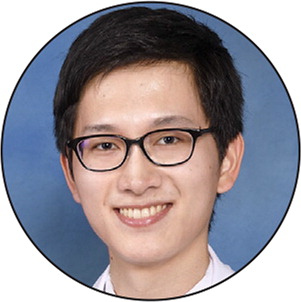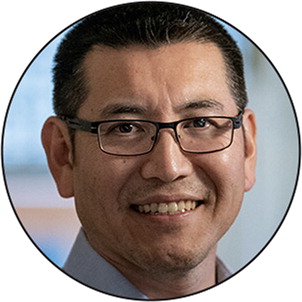
Am Fam Physician. 2021;103(12):762
Author disclosure: No relevant financial affiliations.

10:00 a.m.
I examine a playful toddler who is here for a regular well-child visit. The toddler's father smiled about his son's improvement following helmet therapy for plagiocephaly. The father also explained that his wife had just safely returned to Pittsburgh after giving birth to a girl six weeks ago in Los Angeles, where she had traveled to be with her family, a Japanese tradition. I am honored by this relationship of trust from this family and cannot wait to meet their infant daughter as her family physician.
2:30 p.m.
I receive a text message from my parents, who are now living in Germany. My parents showed me their medical-grade masks, which are mandatory in public settings there. We have been in touch weekly, especially since I left Japan for my residency.
4:00 p.m.
I receive an email that the Pittsburgh Marathon is going virtual. I registered for the half marathon to bolster my motivation to keep in shape after giving up regular indoor badminton during the pandemic. I didn't anticipate a virtual marathon, although virtual medical conferences have become the new normal. When I attended a virtual annual conference last year, I enjoyed giving a poster presentation while still having more time at home with my wife.
5:30 p.m.
A fellowship program in addiction medicine offered me a virtual interview! The idea of a fellowship is exciting because interacting with other physicians who have similar interests is so rewarding. I am a little concerned about adjusting my rotation schedule and the time needed to prepare for the program. In an unprecedented pandemic, the fellowship application process has made me realize how much residency staff has supported me like a family.

4:50 a.m.
I woke up early again. I couldn't go back to sleep because I was thinking about vaccinating 1,200 patients every week in our clinics. Can the waiting room hold 50 people an hour while they maintain six feet of distance? Do we have enough staff to register the patients smoothly? What if someone has an anaphylactic reaction? Can our call center handle 10,000 more calls?!
8:30 a.m.
I looked through my electronic health records for urgent requests and found an insulin refill request for a patient I had examined only once before the pandemic. I called the patient, but no one answered, and I left a brief message. Something bothered me, so I called again. This time the patient answered. “Doc, I'm messed up. I use dope. A bag every morning. This pandemic messed me up.” I listened to the patient and heard the magic words, “I need help.” I asked the patient if I could have someone call to provide help, and the patient agreed.
2:40 p.m.
I got a message from the director of our Medication-Assisted Therapy Program. “Seiji, thank you for sending your patient to us. He wants to be on methadone, so we'll escort him through that process. We saw him three years ago, but he wasn't ready. Opiates are only a part of his problem. He has a history of mental illness and self-harm through cutting and is a very high suicide risk.” I was thankful for this team's support.
8:10 p.m.
“That's a wrap, folks!” yelled a nurse. We vaccinated 84 clinic employees tonight. We even called in four very happy people on standby for the extra doses we got out of the vaccine vials. We have vaccinated 520 staff members, but we still have some staff declining to get vaccinated. The reasons for declining are the same as any patient: fear of adverse effects and mistrust of vaccines. One troubling reason is family pressure. One employee said, “My family is afraid that I'll bring home COVID if I get the shot. They won't let me get it.” Education has helped, but seeing colleagues get vaccinated with mild adverse effects has been the most effective at changing people's minds.
